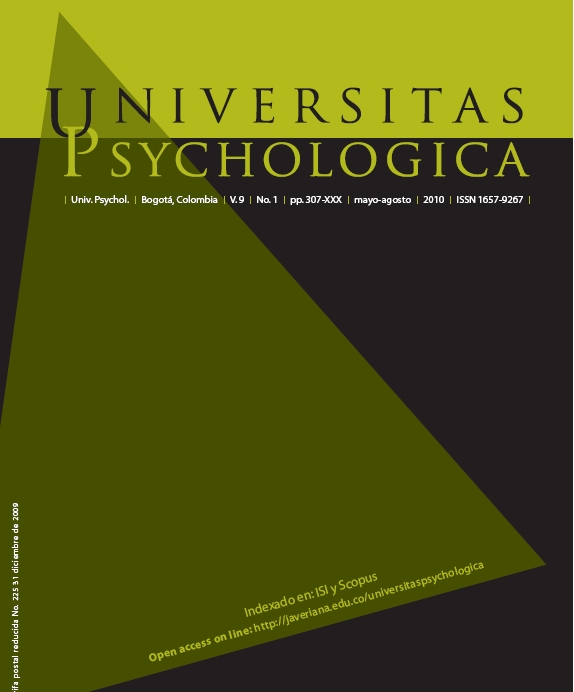Abstract
With the aim of knowing the psychometric characteristics of a Spanish version of the Positive and Negative Suicidal Ideation Inventory-PANSI, an instrumental study was developed. Its application required the participation of 643 students of high schools and universities of San Juan de Pasto (Colombia). The exploratory factor analysis showed a bi-factor structure, that accounted for 64% of variance. The first factor corresponded to negative suicidal thoughts, while the second one included protective thoughts against suicide. The total scale and the sub-scales had high values of internal consistency. Significant relationships were found between PANSI and measures of depression, hopelessness, suicidal thoughts and self-esteem, and with severity indicators of suicidal behavior. It was concluded that PANSI has adequate psychometric properties, making it suitable to be used with adolescents and young students.
This journal is registered under a Creative Commons Attribution 4.0 International Public License. Thus, this work may be reproduced, distributed, and publicly shared in digital format, as long as the names of the authors and Pontificia Universidad Javeriana are acknowledged. Others are allowed to quote, adapt, transform, auto-archive, republish, and create based on this material, for any purpose (even commercial ones), provided the authorship is duly acknowledged, a link to the original work is provided, and it is specified if changes have been made. Pontificia Universidad Javeriana does not hold the rights of published works and the authors are solely responsible for the contents of their works; they keep the moral, intellectual, privacy, and publicity rights. Approving the intervention of the work (review, copy-editing, translation, layout) and the following outreach, are granted through an use license and not through an assignment of rights. This means the journal and Pontificia Universidad Javeriana cannot be held responsible for any ethical malpractice by the authors. As a consequence of the protection granted by the use license, the journal is not required to publish recantations or modify information already published, unless the errata stems from the editorial management process. Publishing contents in this journal does not generate royalties for contributors.


